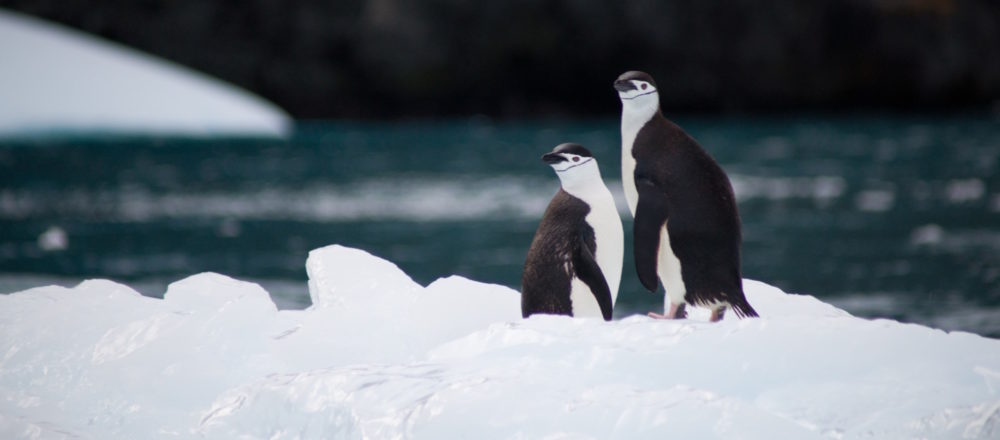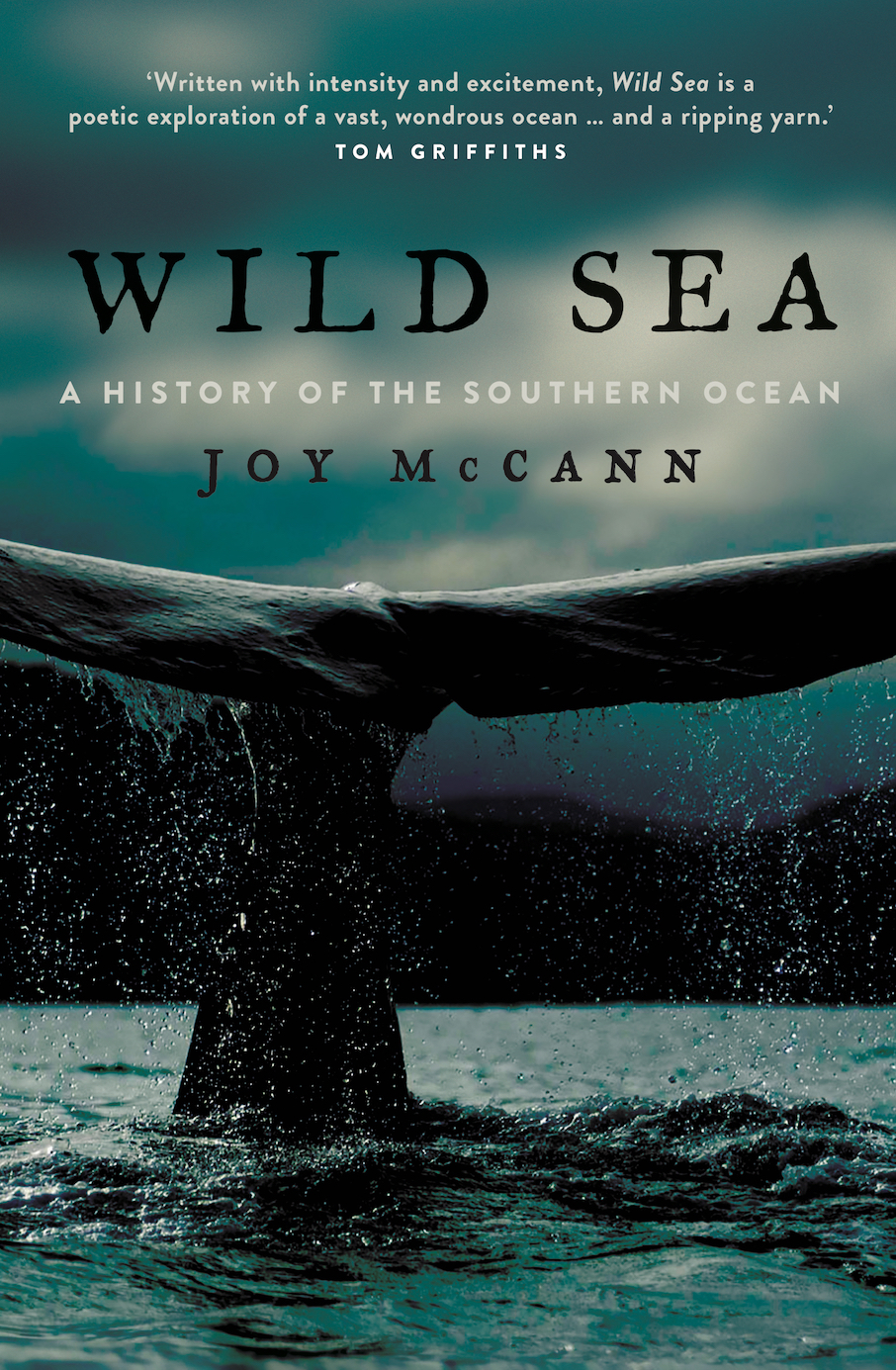In your new book ‘Wild Sea: A History of the Southern Ocean’ you write that the Southern Ocean is ‘difficult to pin down’. Where is the Southern Ocean and how did its borders escape definition?
That is a short question with a rather long answer! The Southern Ocean is a circumpolar ocean – its waters flow completely around the globe uninterrupted by any landmass, in the high southern latitudes. This is why its winds and currents are amongst the most powerful on Earth. The Southern Ocean is of course defined to the south by the continent of Antarctica. Its northern limits, however, have been the subject of international disagreement since 1928 when maritime nations first tried to define the limits of the world’s oceans and seas in order to create a uniform system of nautical maps and charts.
The first issue of Limits of Oceans and Seas published by the International Hydrographic Bureau (now Organisation) in 1928 showed the Southern Ocean extending as far north as the southern coastlines of South Africa, Australia, New Zealand and South America.
In the second edition in 1937, the northern boundary had been moved southward and, by the third edition in 1953, the Southern Ocean had been erased altogether, and nations were advised to determine their own boundary. The United States, for example, adopted the line of latitude 60° South and Great Britain 55° South, while Australia regarded the Southern Ocean as all the waters south of its coastline from latitude 40° South.
The Southern Ocean was reinstated in 2000 as the world’s fifth ocean, in recognition of its physically and biologically distinctive waters south of the Antarctic Convergence (also known as the Antarctic Polar Front) where the cold polar waters meet and mix with the warmer northern waters of the Atlantic, Pacific and Indian Oceans. The IHO issued a draft boundary in 2002, but this northern limit has not been agreed by all nations.
So, you can see that the location, even the existence, of the Southern Ocean depends on which nation’s map you consult.
I should add that, in writing Wild Sea, I decided to include all the waters south of Australia, New Zealand, South America and South Africa, just as the early mariners did – encompassing the ocean south of the Roaring Forties all the way to Antarctica. In addition, like most South Australians, I regard the waters to the south of our coastline as part of the Southern Ocean!
You’ve travelled extensively in the Southern Ocean; from the icy shores of Antarctica to what you describe as the “sensory overload” of beaches teeming with life in South Georgia. What were some of the highlights and what makes this part of the world so special?
The Southern Ocean is an incredibly fertile ecosystem, home to a myriad of creatures from the mysterious invertebrates that inhabit the briny waters beneath the sea ice around Antarctica, to the giant Wandering Albatross that spend years riding the winds of the Southern Ocean, and the baleen whales that migrate south each summer to feed in the ocean’s nutrient-rich waters.
This abundance of life is most visible in the waters and on the beaches of subantarctic islands such as South Georgia, where seals and penguins and sea birds of the Southern Ocean come to breed each year.
Standing on a beach with half a million king penguins and their chicks was one of the most overwhelming and emotional experiences of my life.
These creatures depend on these tiny shards of land in the midst of the Southern Ocean to survive. And then there are the Emperor penguins, which are the only creature to breed and raise their young on the sea ice of Antarctica – in mid-winter. What an extraordinary place this is, and yet it is a difficult environment for us humans to even visit, let alone survive in. I think it is precisely that remoteness and inaccessibility that makes it even more special.
In Wild Sea, you explore how attitudes towards the Southern Ocean have changed over time. What have been some of those key changes?
Perhaps the most significant change has been to understand the Southern Ocean as an ecosystem, whereby everything – the living organism and the ocean they inhabit – are part of an interconnected whole. It reflects the complex interactions of species with each other and the environment.
The idea developed for land-based environmental protection programs from the mid-twentieth century, but in the 1970s nations that were party to the Antarctic Treaty came to see the Southern Ocean as an ecosystem and this resulted in them agreeing to the Convention on the Conservation of Antarctic Marine Living Resources (‘CCAMLR’) which regulates harvesting of species in one of the world’s last remaining wildernesses.
The Southern Ocean’s seals and whales and, more recently, its Antarctic krill (the keystone species of the Southern Ocean ecosystem that all other creatures ultimately depend upon), and its prized toothfish species have been exploited indiscriminately.
Hunting, particularly in the twentieth century, nearly wiped out some species including the blue whale, the largest creature to have ever lived on Earth.
So CCAMLR represented a major shift in the way that the ocean was perceived and protected – not just individual species like the iconic whales, but the whole ecosystem that they depend on and contribute to.
For me, it was an ‘aha’ moment – thinking about the three-dimensional environment of the Southern Ocean in this way – that everything is interconnected and changes in one part of the environment will impact on the rest of it. To me, this idea perfectly captures the ocean’s fluidity, its opaqueness, its vulnerability to human impacts and climate change, and its essential power and mystery.
You’ve described the Southern Ocean as a barometer for Climate Change. Can you explain what you mean by this?
This is a big one. Ocean scientists have been studying the Southern Ocean’s currents and water masses and movements for many decades now.
In recent years, with satellite technology has enabled them to better understand how the Southern Ocean influences the rest of the world’s oceans and atmosphere. They can even visualise it, using their data to show the melting sea ice in summer generating cold, dense Antarctic Bottom Water that flows northward and ultimately mixes with the other oceans of the world.
As I understand it (as a non-scientist) oceanographers have found that this normally dense water has become less dense since the 1970s as the ocean warms, and this reduces the capacity of the ocean to store carbon dioxide. This is significant for us humans, as the Southern Ocean absorbs more CO2 than any other ocean, and it is one of the changes that reveal the impact of a warming ocean on the ice of the Antarctic region.
I think we are only just grasping that such a remote and inaccessible ocean environment is in fact intimately connected to profound changes occurring on the rest of the planet.
What are the main threats to the Southern Ocean in the decade ahead? Is there any good news?
The main threats to both the Southern Ocean and Antarctica are well documented and continue to be the subject of research: climate change, fishing (especially illegal fishing), the potential exploitation of mineral resources on the seabed and Antarctica, pollution.
The good news is that there is a strong international commitment and regulatory framework for protecting the Antarctic region, including the surrounding polar ocean, in the form of the Antarctic Treaty and the various conventions protecting individual species, CCAMLR, and the Protocol on Environmental Protection to the Antarctic Treaty (The Madrid Protocol) that provides for comprehensive protection of Antarctica.
There is also a considerable international effort underway to create a marine park across one million square kilometres off the coast of East Antarctica to protect the habitat for penguins, seals, whales and birds. I understand that the latest efforts to reach agreement in Hobart last week failed, but the process continues. But conventions and regulations, underpinned by scientific research, are only one way to approach this.
We also need a cultural shift in the way that we see our oceans – I call it a new ‘ocean consciousness’ for the 21st century.
We used to have it in the early years of scuba-diving and oceanography that contributed to an emerging sense of the incredible world in the ocean’s depths – back in the early post-war years of the twentieth century. That is what inspired widespread public opposition to whaling in the Southern Ocean from the 1970s, and more recently documentary films such as the BBC’s Blue Planet series. And that is why I wrote Wild Sea – to explore this amazing but little-known ocean to our south, and to encourage a greater sense of connection with it.
Right Now is a proud partner of Quantum Words Festival, Western Australia’s first writers’ festival dedicated specifically to writing about science, creativity and the spaces in which they intersect. Quantum Words is running in Perth from 8-10 November 2019. Find out more about the festival here, and more about the Quantum Word speakers here.



